(Page créée avec « *Wood board 64cm x 14cm x 22mm *2 squares 40mm *4 wood screws 4 x 20 {{Info|...Double use for this board. While it fixes the pedal in place, it also creates an anti-tippin... ») |
(Page créée avec « Two possible options: one being to fix the board to the feet of the shelf, the other being for the more handy, to make a cut-out to embed the feet of the shelf into the an... ») |
||
| Ligne 198 : | Ligne 198 : | ||
| − | + | Two possible options: one being to fix the board to the feet of the shelf, the other being for the more handy, to make a cut-out to embed the feet of the shelf into the anti-tipping board. We present here the second choice. | |
#Tracer et découper les emplacement des pieds de l'étagère en perçant puis en découpant à la scie sauteuse les découpes. | #Tracer et découper les emplacement des pieds de l'étagère en perçant puis en découpant à la scie sauteuse les découpes. | ||
Version du 29 août 2020 à 00:10
Description
Autonomous sink for children and adults
Sommaire
Sommaire
- 1 Description
- 2 Sommaire
- 3 Introduction
- 4 Étape 1 - Assembling the shelf
- 5 Étape 2 - Inserting the sink into the shelf
- 6 Étape 3 - Installing the fitting for the clean water bucket
- 7 Étape 4 - Connecting the tubes
- 8 Étape 5 - Leak testing the connections
- 9 Étape 6 - Attaching the swivel spout tap to the board
- 10 Étape 7 - Threading the drain to the sink
- 11 Étape 8 - Installing sink stopper chain and metal fastener (optional)
- 12 Étape 9 - Installing wastewater drainage
- 13 Étape 10 - Anti-tip system
- 14 Étape 11 - Fixer la pompe à pied
- 15 Étape 12 - Traitement du bois
- 16 Notes et références
- 17 Commentaires
Introduction
This "autonomous" sink was originally created for a nursery school classroom.
The classroom doesn't have a water line connection and we didn't want the sink to depend on an electrical outlet. This idea emerged in the period of Covid and of concern with sanitation.
We conceived of this sink with the idea that it could equally serve in other contexts, an isolated workshop for example.
We opted, then, for a shelving system that could be adjusted in height, permitting the user to adjust it to the desired size.Étape 1 - Assembling the shelf
For the shelf, the most autonomy would obviously be to do it yourself, but we are focused on assembly from existing materials.
So, to assemble this shelf, refer to the manual provided by Ikea.
Étape 2 - Inserting the sink into the shelf
Materials
- Masking tape
- Ruler
- Square
- Tape Measure
- Drill
- 10mm drill bit
- Jigsaw
Directions
- Plot the outline of the part of the sink to be inserted on the non-visible side of the board (the underside).
- Drill a hole on each of the 4 corners of the outline
- Cut out the outline with the jigsaw
- Insert the sink
- Install the shelf with the sink at the desired height according to the size of the children or adults
Étape 3 - Installing the fitting for the clean water bucket
Materials
- Auer plastic food safe bucket - 30 liters
- Masking tape
- Ruler
- Tape measure
- Step drill bit
- Fitting - 12mm diameter, 1/2" straight threading
Directions
- Mark the location of the fitting in the lowest part of the bucket.
- Drill the bucket with the step drill bit.
- Screw the fitting in. Attach the gasket and nut to the fitting inside the bucket.
Étape 4 - Connecting the tubes
Materials
- Clear tubing 16/12mm (120cm + 20cm)
- Clear tubing 12/10mm (40cm)
- Plastic reducing adapter 12/10mm
- Foot pump
- Swivel spout tap
Directions
- Connect the clean water bucket to the foot pump. Attach the 16/12 (1.2 meters) tube to the nozzle of the clean water bucket. Then, connect the 16/12 tube to the foot pump (The nozzle on the right when viewed from the bottom (water intake)).
- Connect the foot pump to the swivel spout tap. Link the 16/12 (20cm) tube from the foot pump to the adapter and then to the 10/12 (40cm) clear tube which goes toward the swivel spout tap.
Étape 5 - Leak testing the connections
Using 5 litres of water placed in the clean water bucket, test the watertightness of the system in place.
Étape 6 - Attaching the swivel spout tap to the board
Materials
- Drill
- Drill bits
- Swivel spout tap
Directions
- Mark the location and drill a hole using a size 18 flat wood bit
- Make a countersink hole using a size 39 flat wood bit on the bottom of the board.
- Screw the base of the tap into the board and install the spout.
Étape 9 - Installing wastewater drainage
Materials
- Jerrycan/fuel can 20 litres
*Ribbed hosing - 25mm diameter 90cm length
- Drill with step drill bits
- Straight drain and plug 25mm
- PVC fastener 40mm. 4 x 30 screw
Directions
- Drill a 32mm hole into the lid of the jerrycan with the flat drill bit and drill.
- Connect the sink drain to the jerrycan.
- Install a 40mm diameter PVC fastener for the drainage hose. "(When the jerrycan is full and it's time to empty it, this fastener allows you to keep the hose raised, which prevents the water remaining in the hose from spilling on the floor, which happened on our first use...)"
- Install and test the drainage system.
Étape 10 - Anti-tip system
Materials
- Wood board 64cm x 14cm x 22mm
- 2 squares 40mm
- 4 wood screws 4 x 20
Two possible options: one being to fix the board to the feet of the shelf, the other being for the more handy, to make a cut-out to embed the feet of the shelf into the anti-tipping board. We present here the second choice.
- Tracer et découper les emplacement des pieds de l'étagère en perçant puis en découpant à la scie sauteuse les découpes.
- Fixer la planche à l'étagère avec 2 équerres.
Étape 12 - Traitement du bois
Afin de protéger le bois des éclaboussures, celui-ci a été traité avec une huile dure en 2 couches.
Notes et références
Liste du matériel et liens vers les fournisseurs : Google Docs
Published
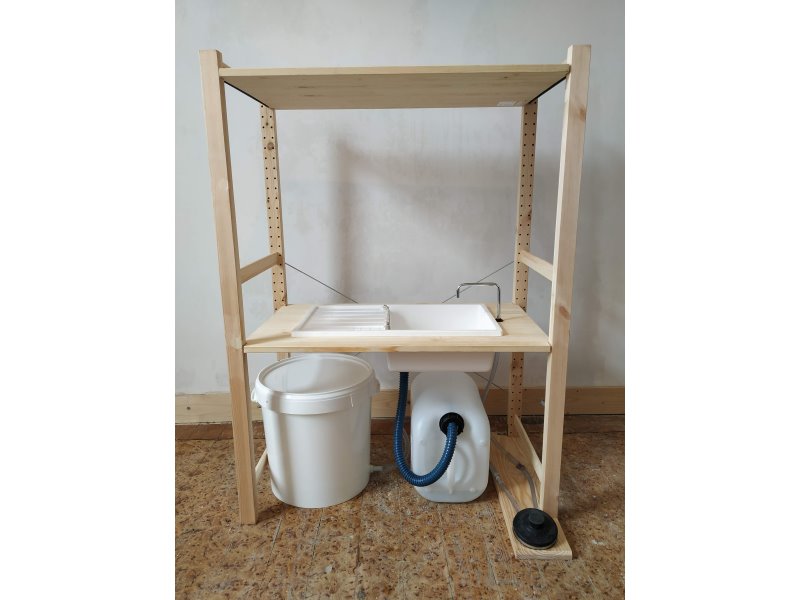
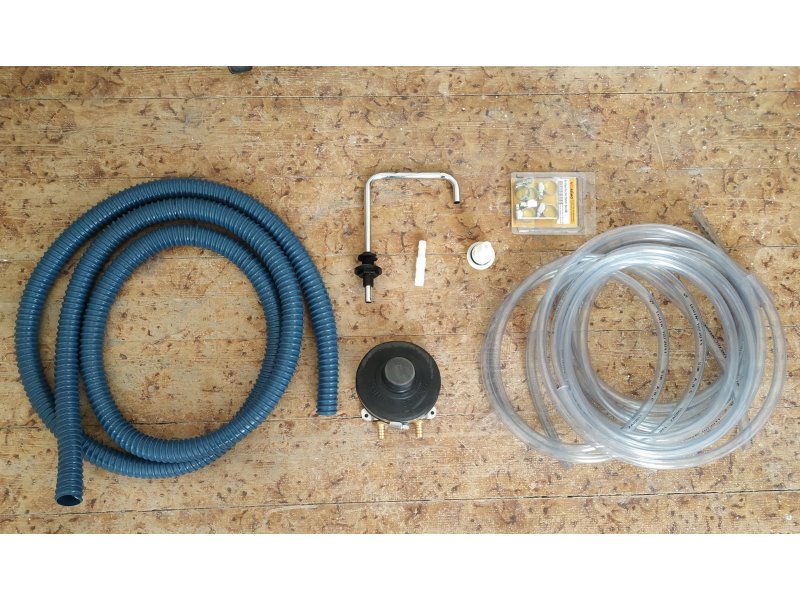
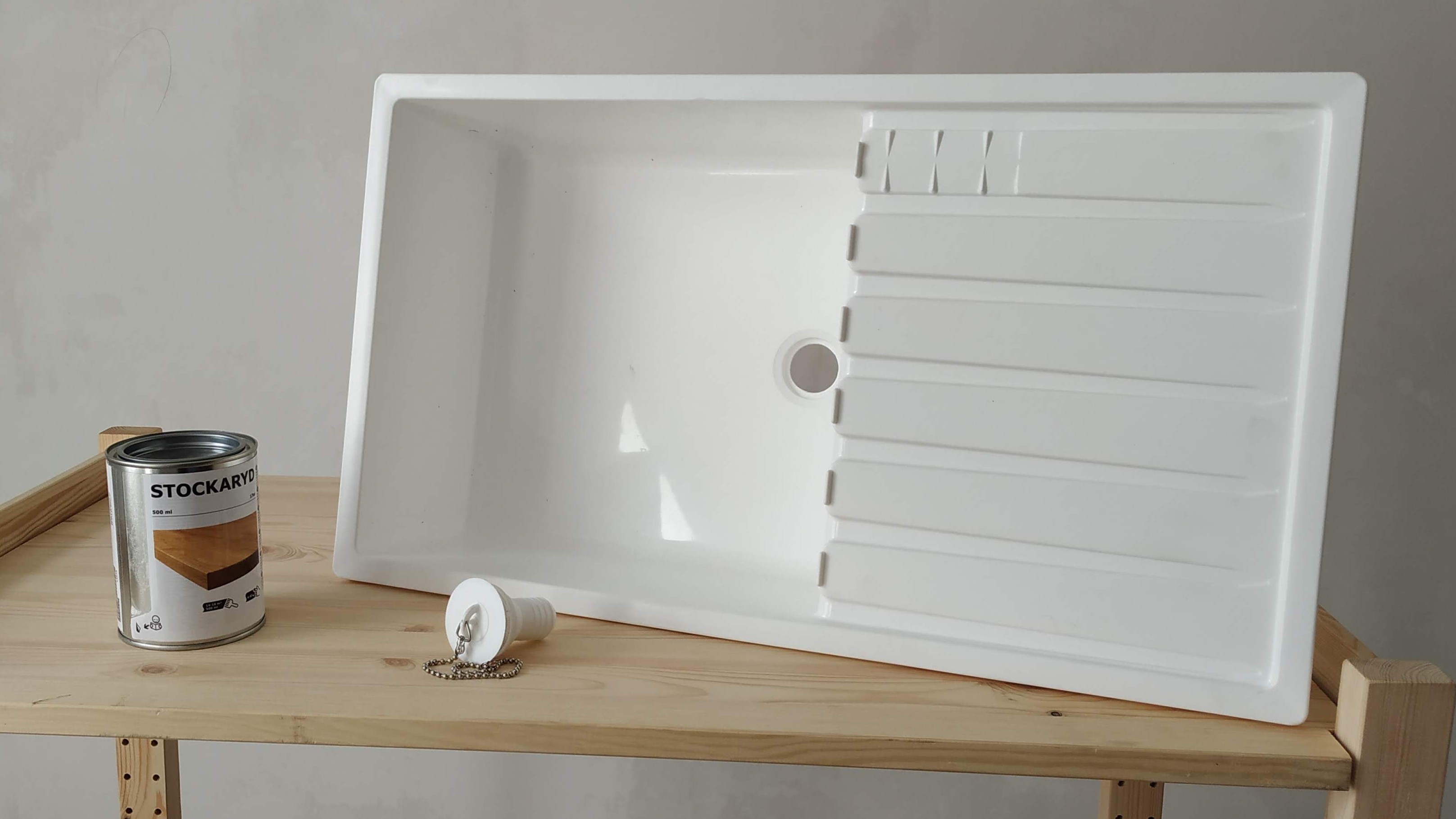
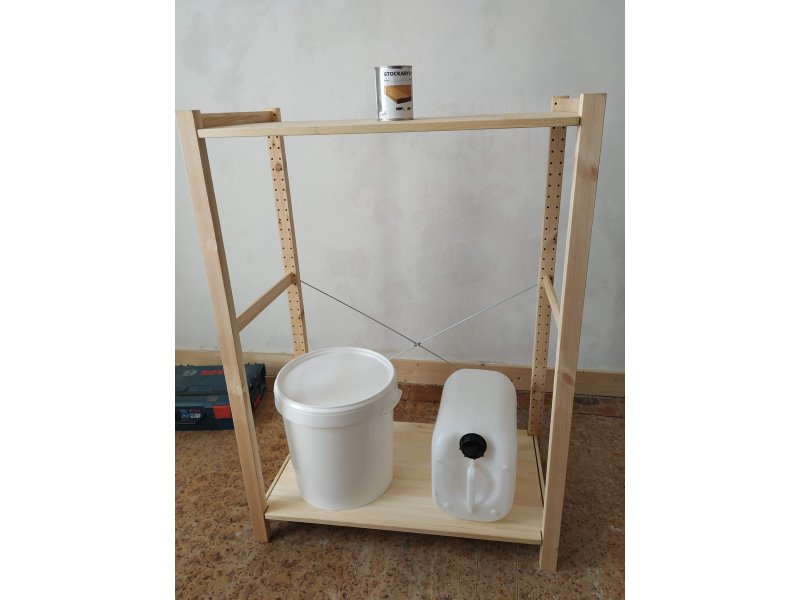
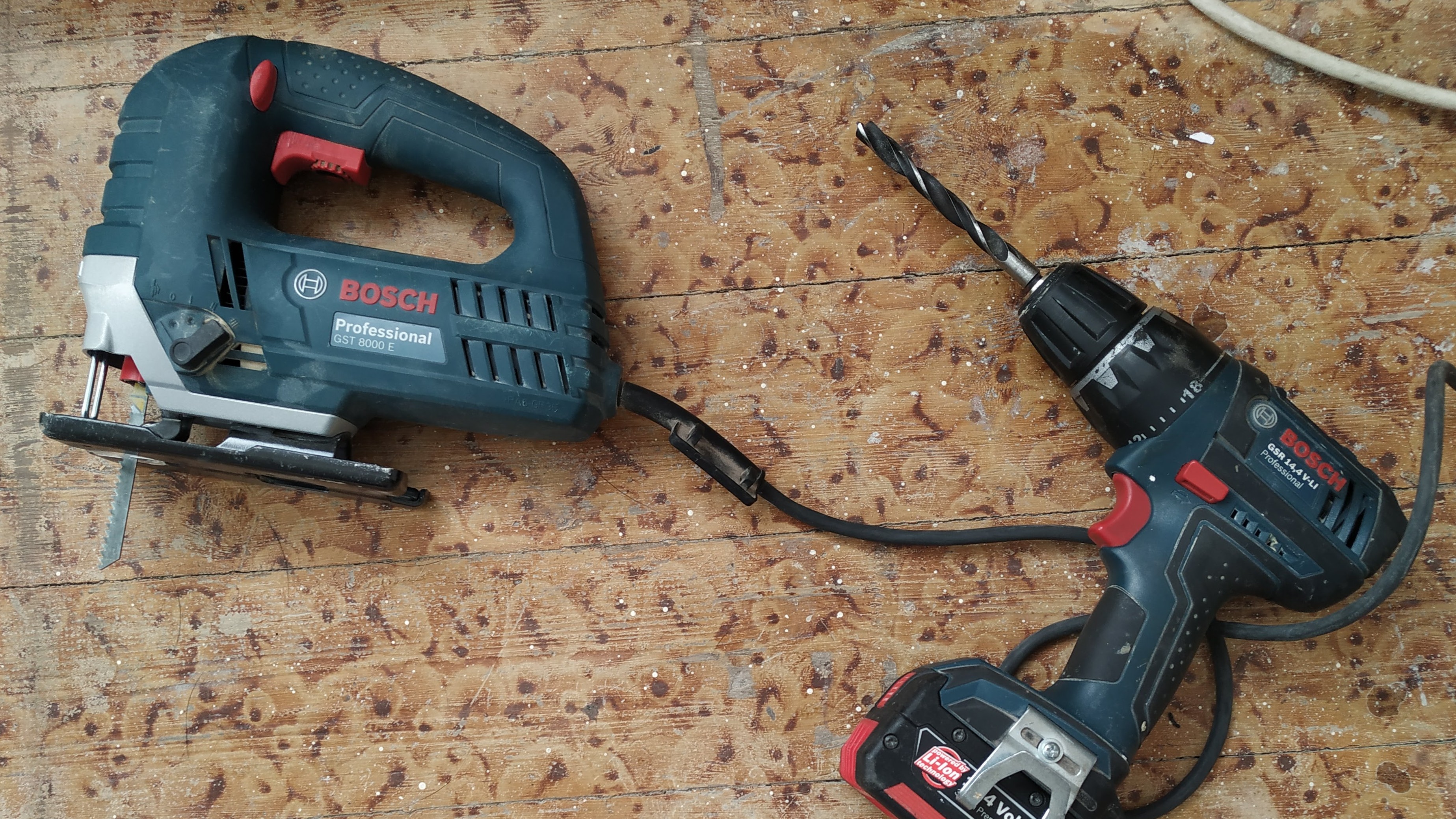
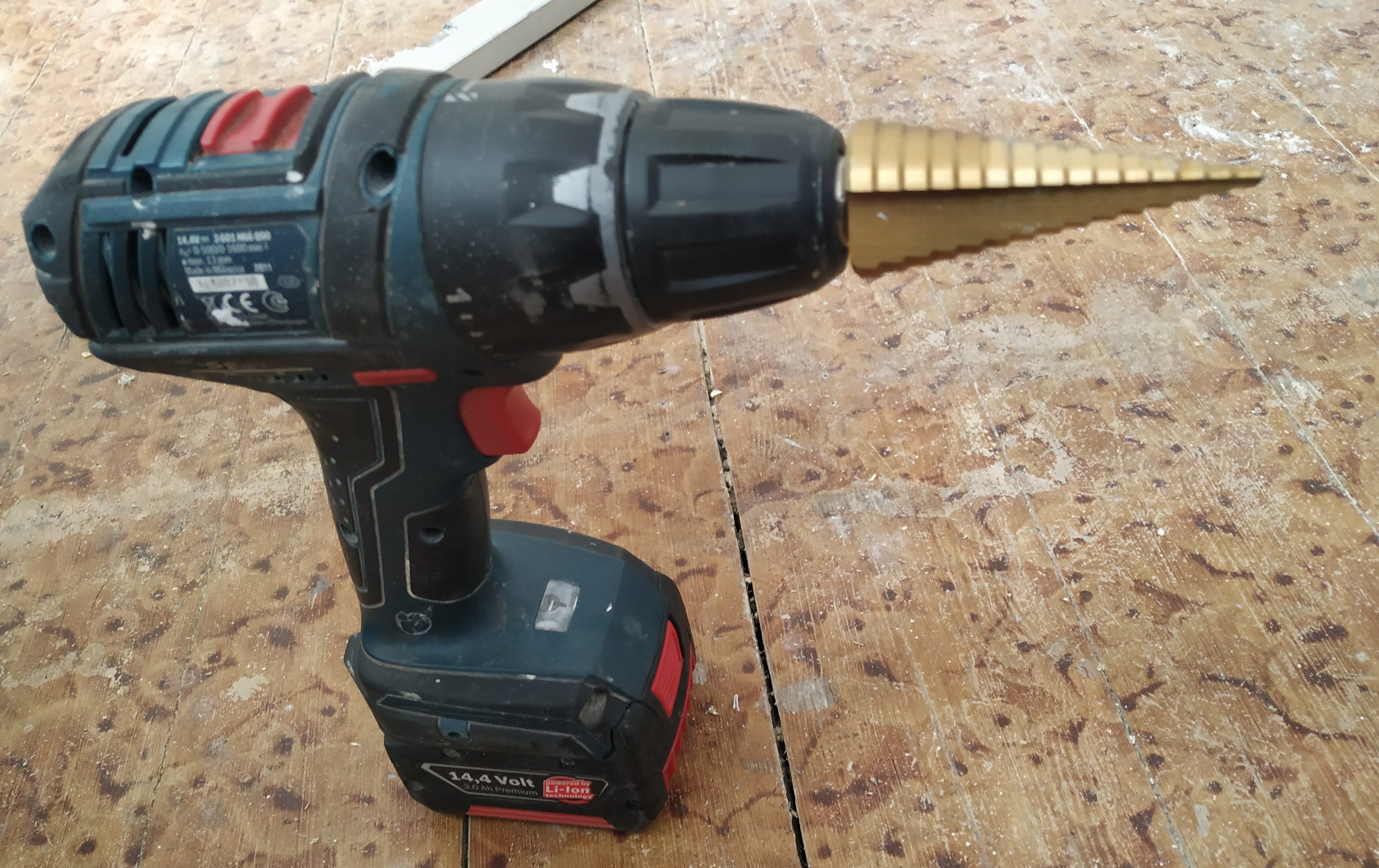
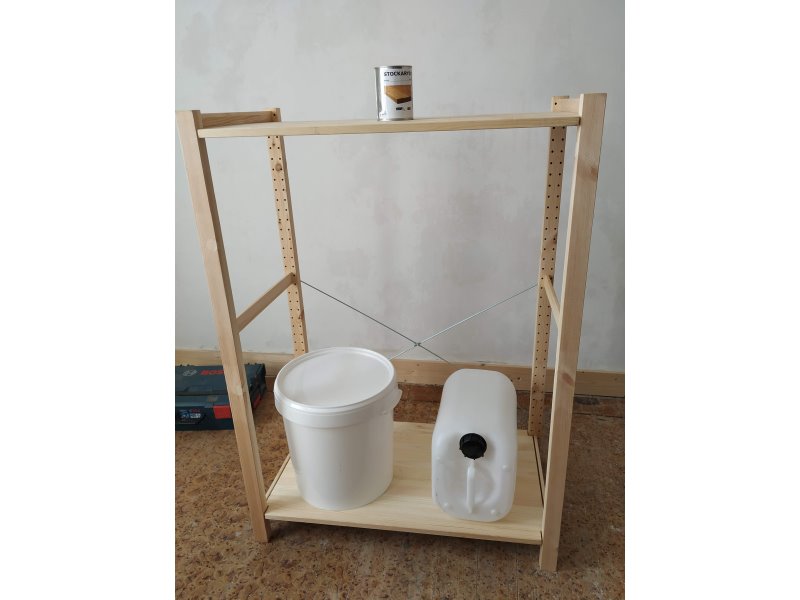
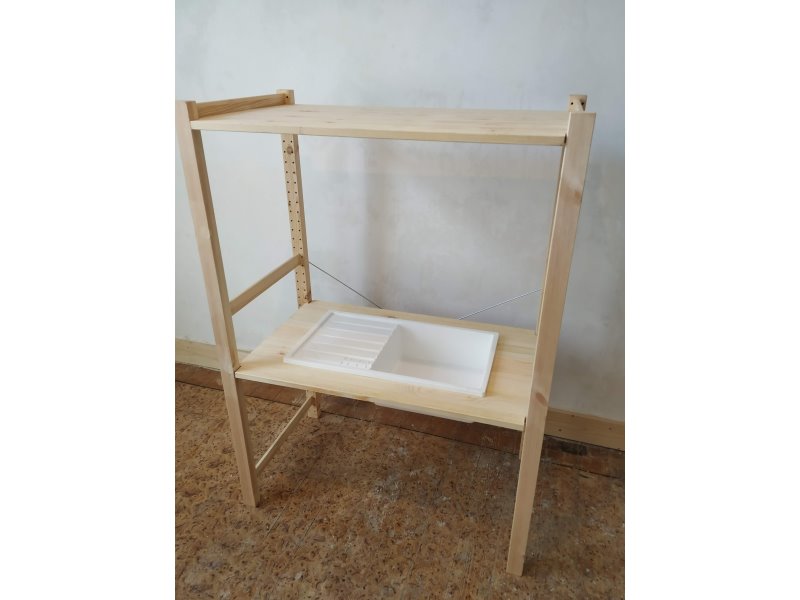
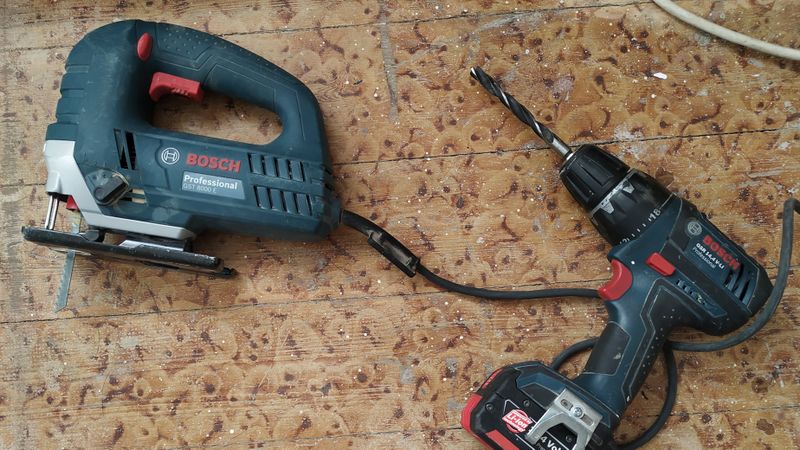
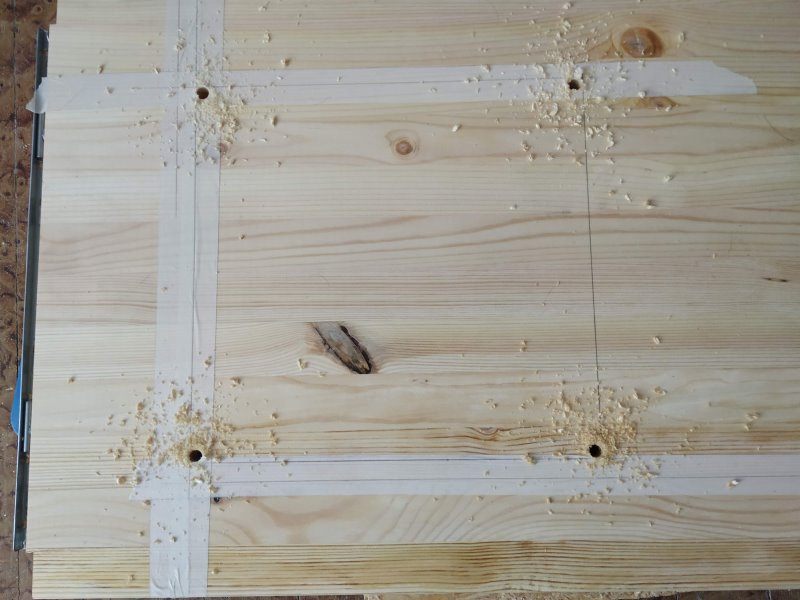
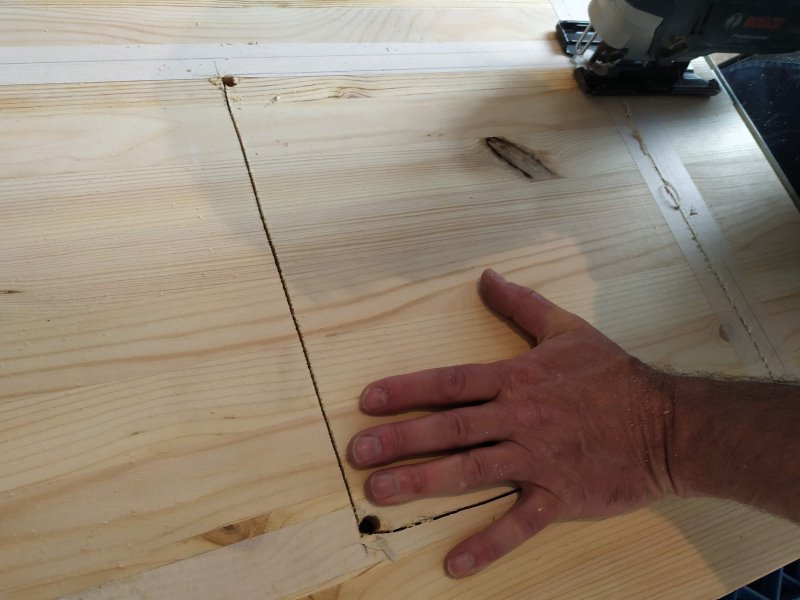

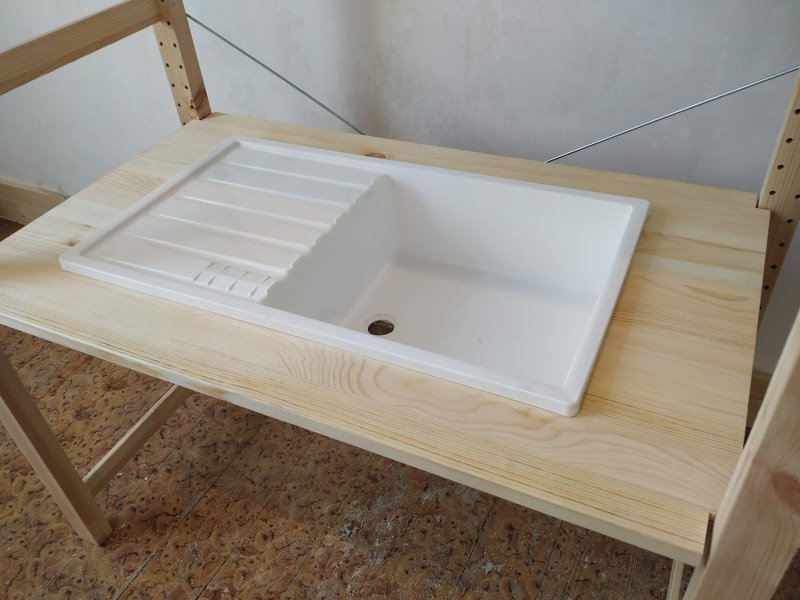
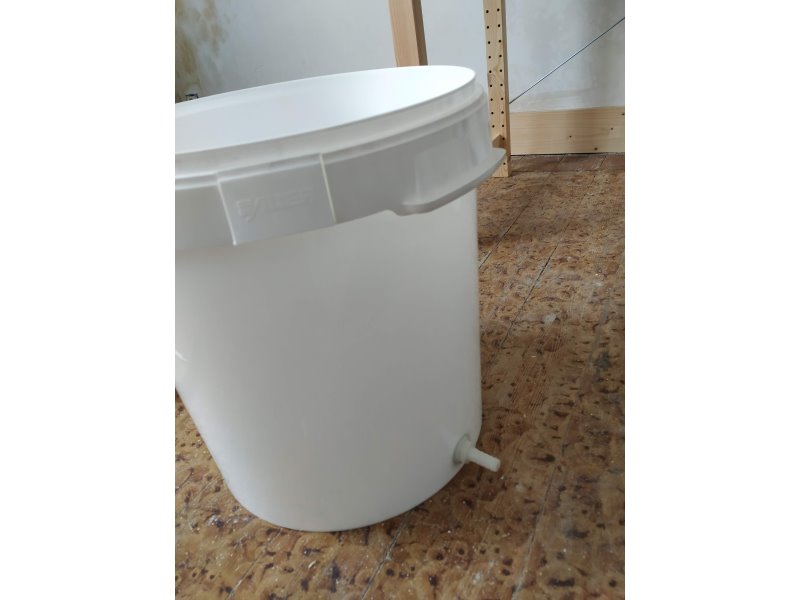
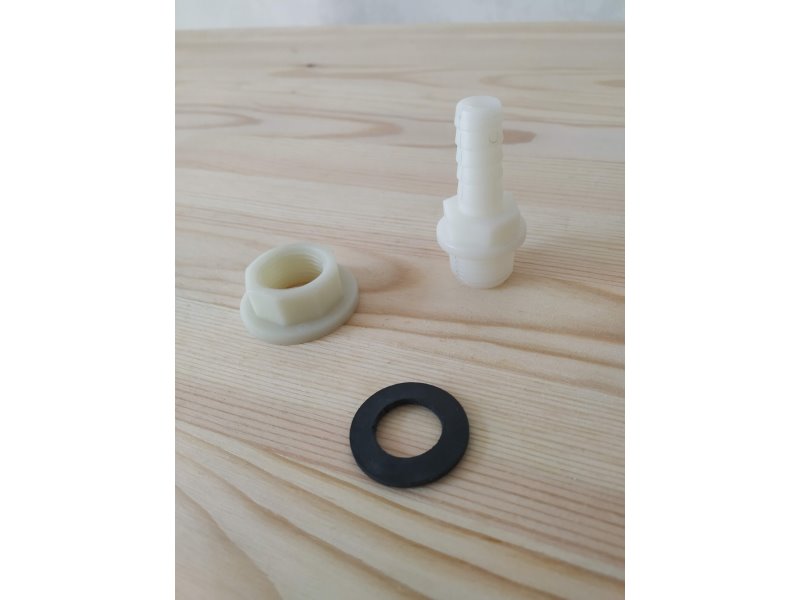
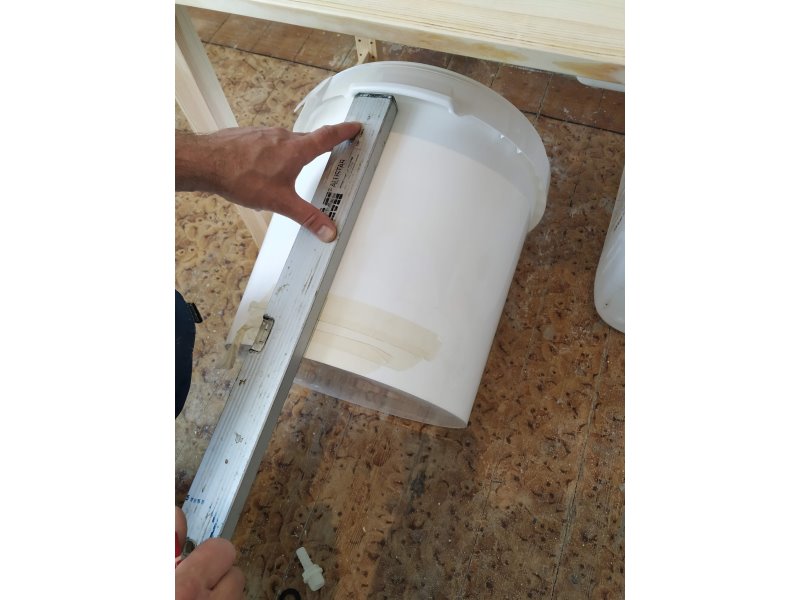
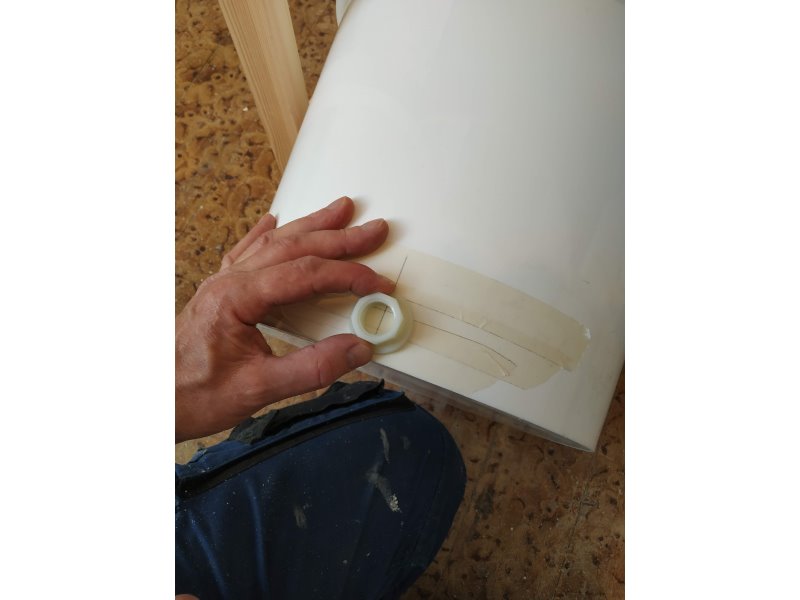
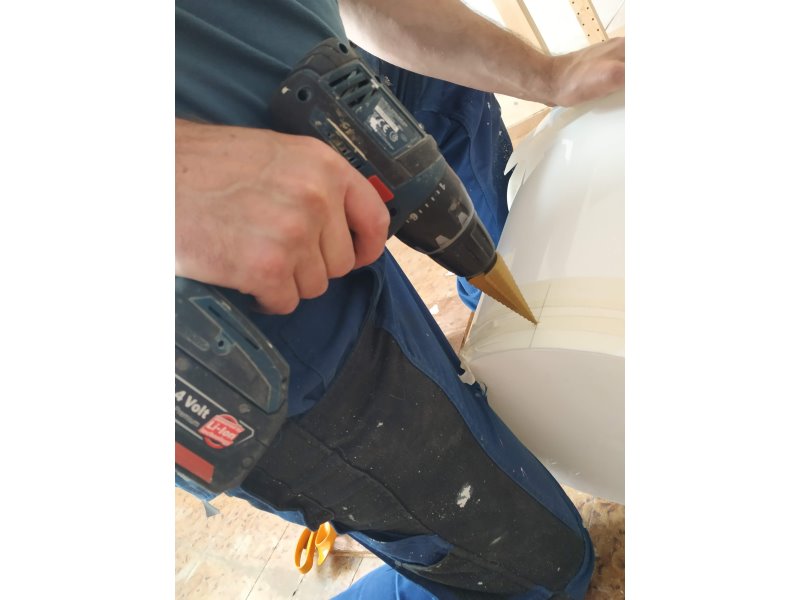
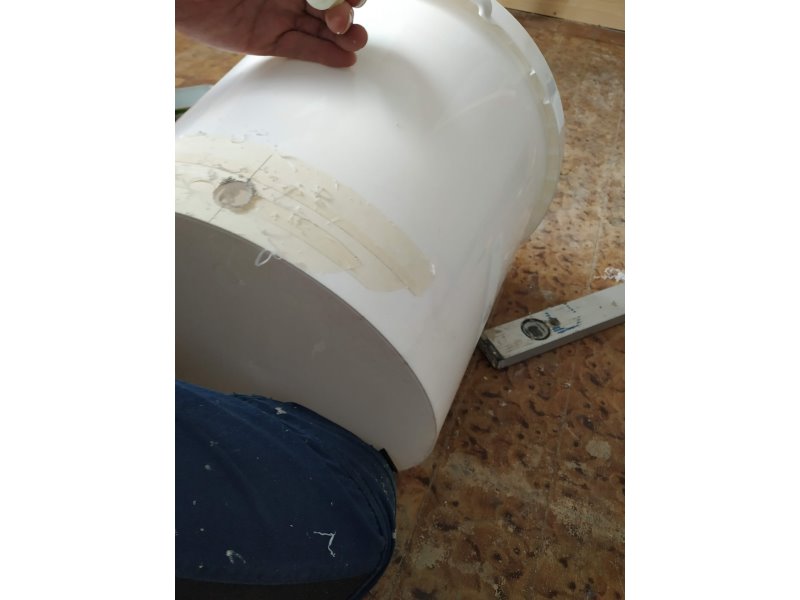
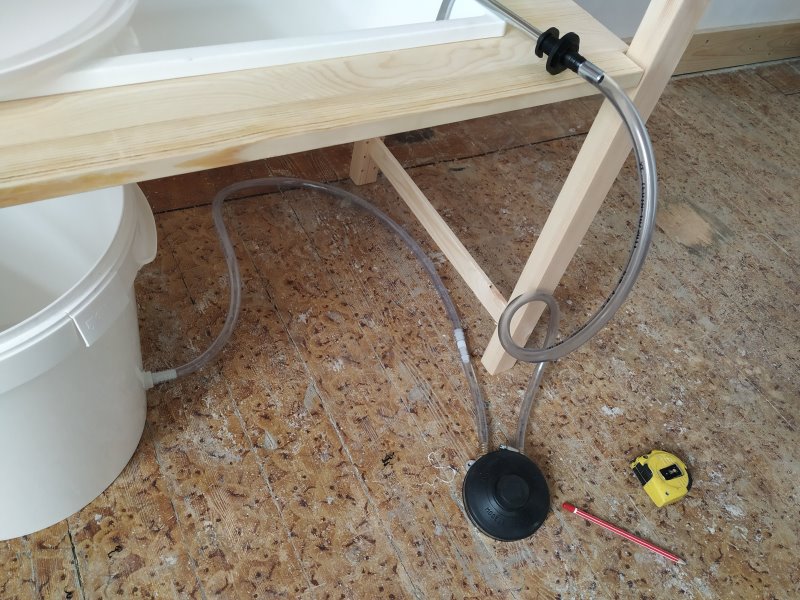
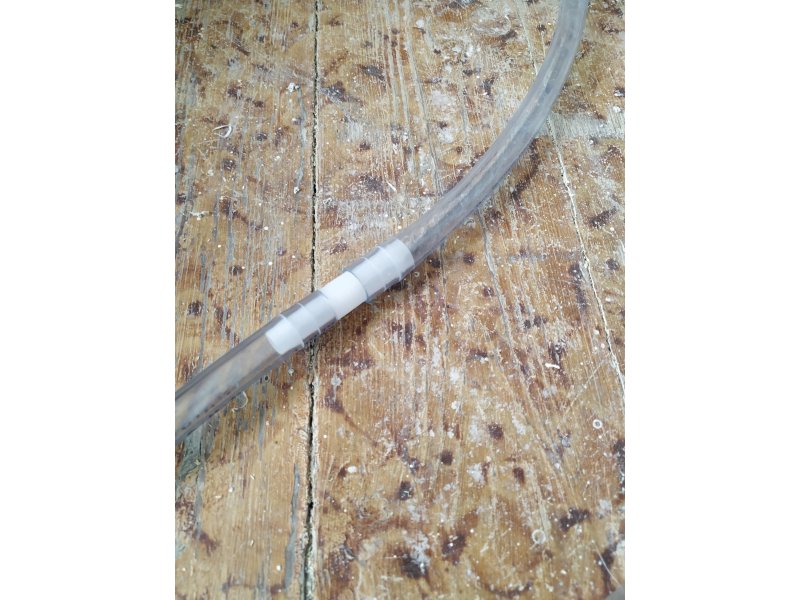
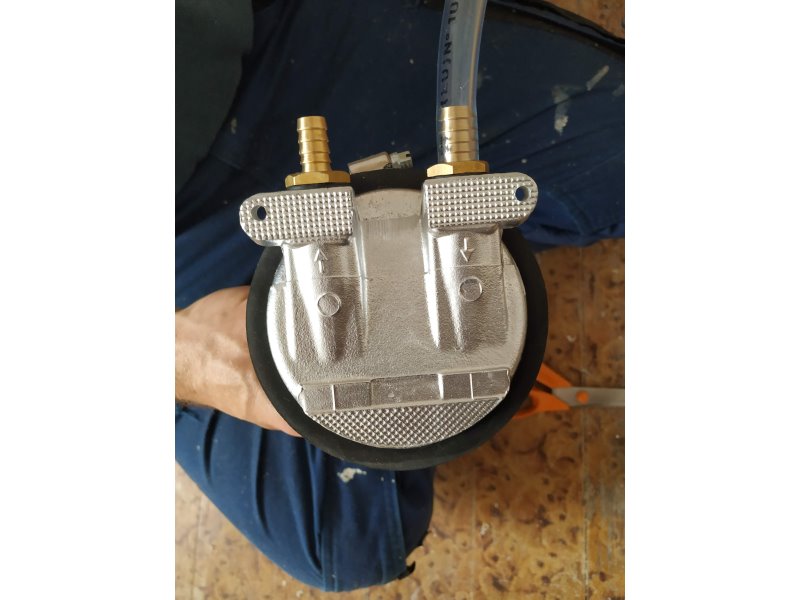
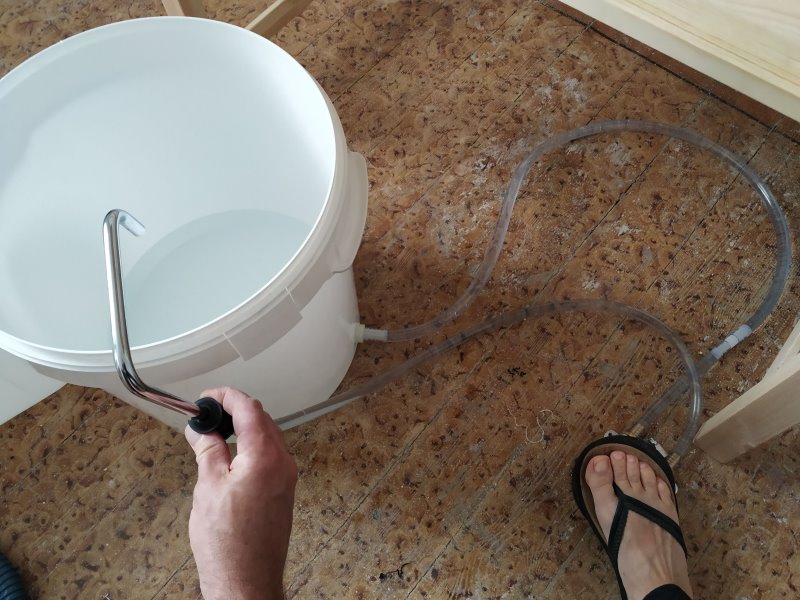
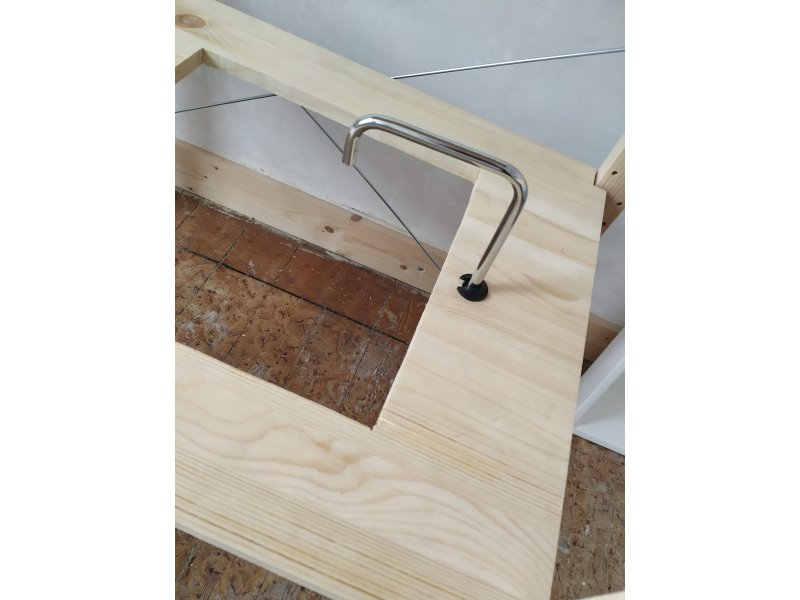
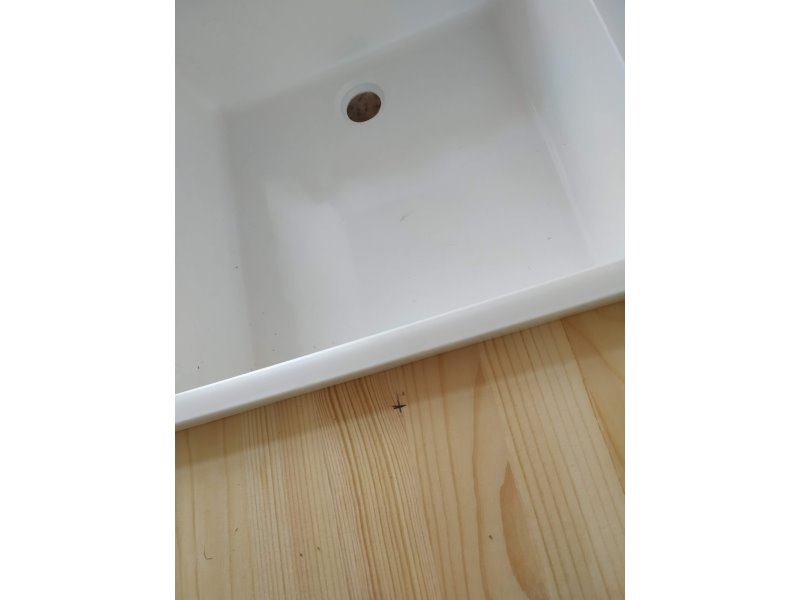
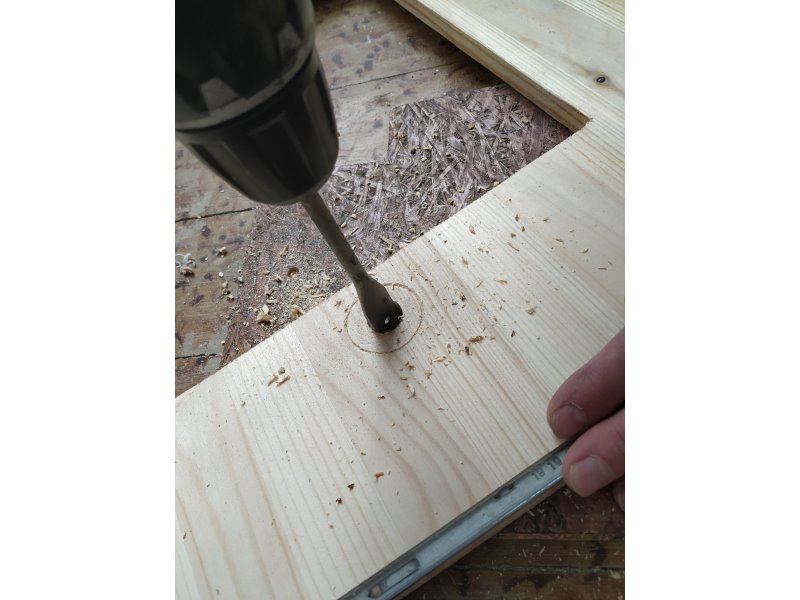
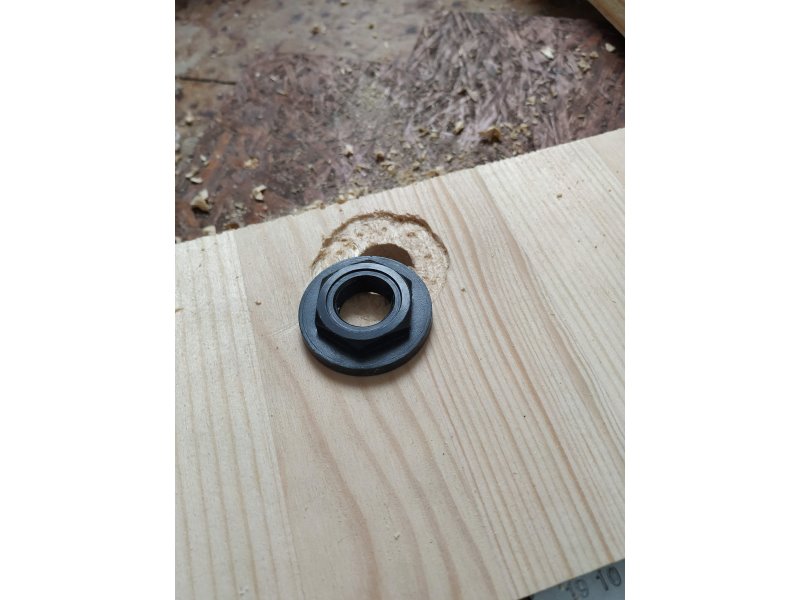
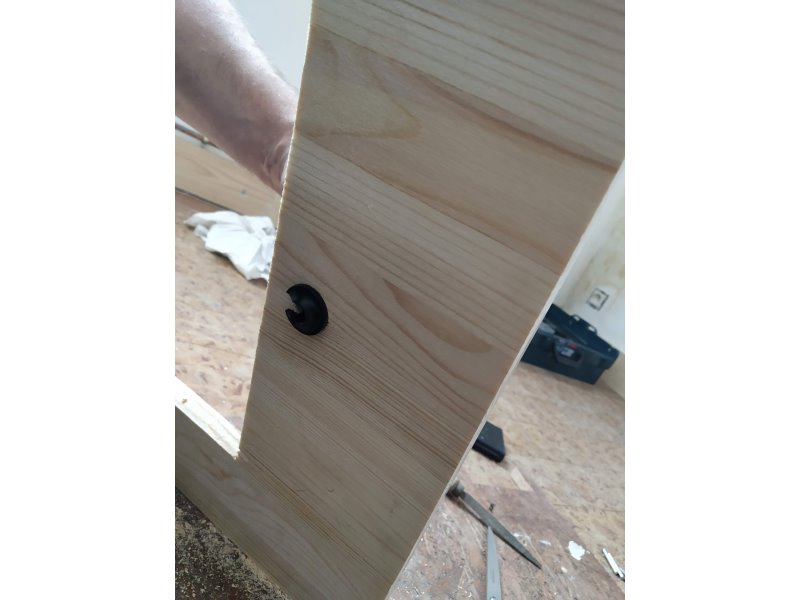
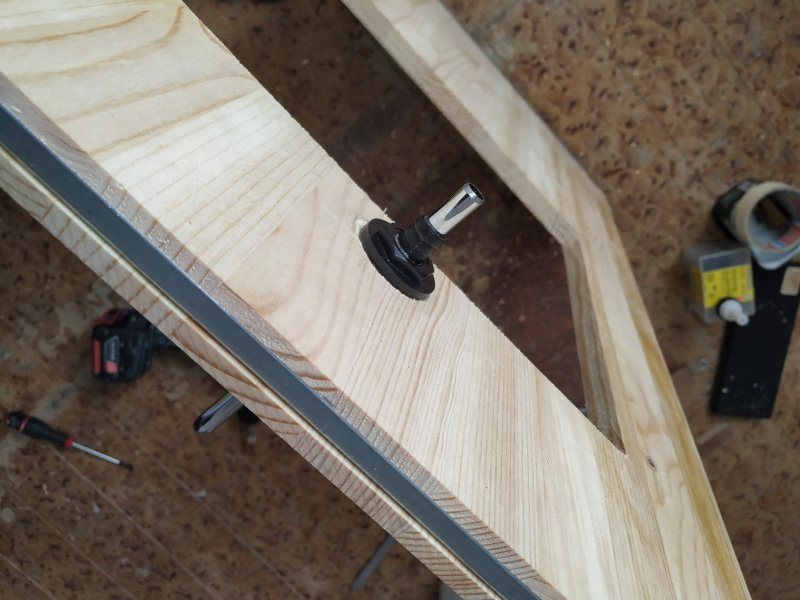
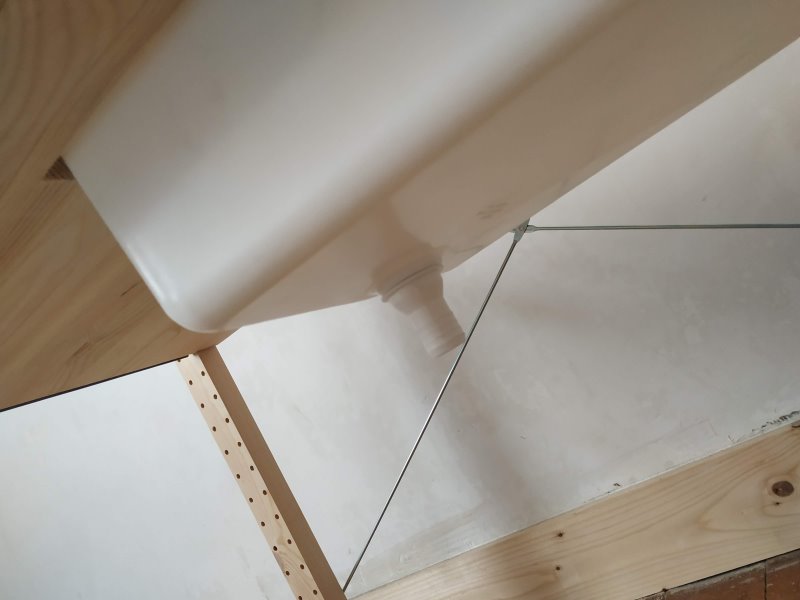
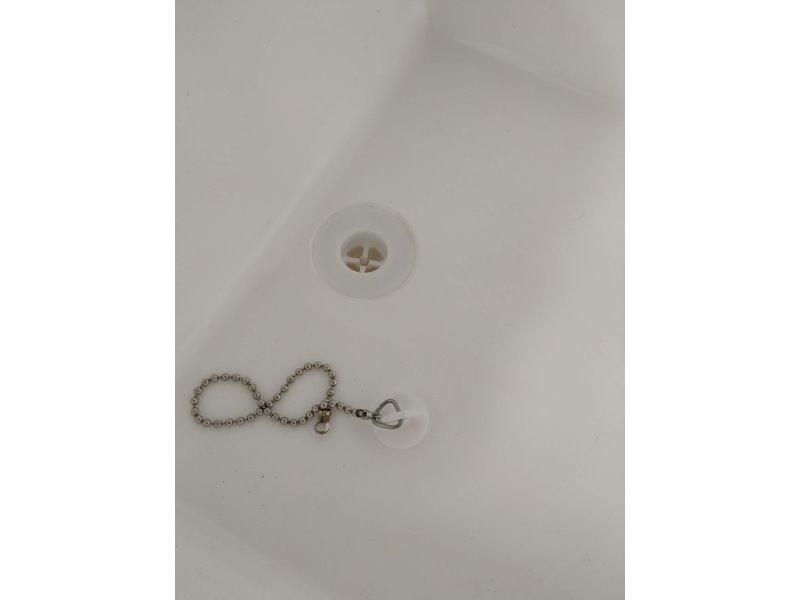
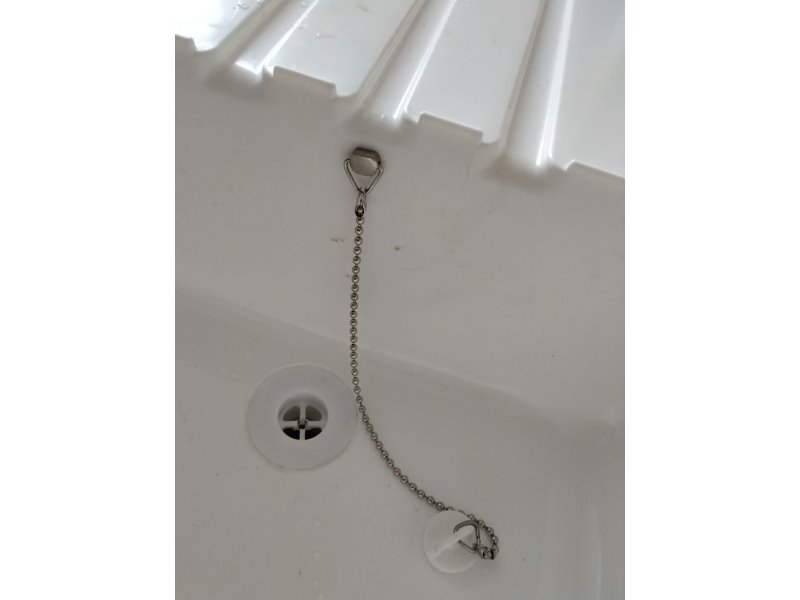
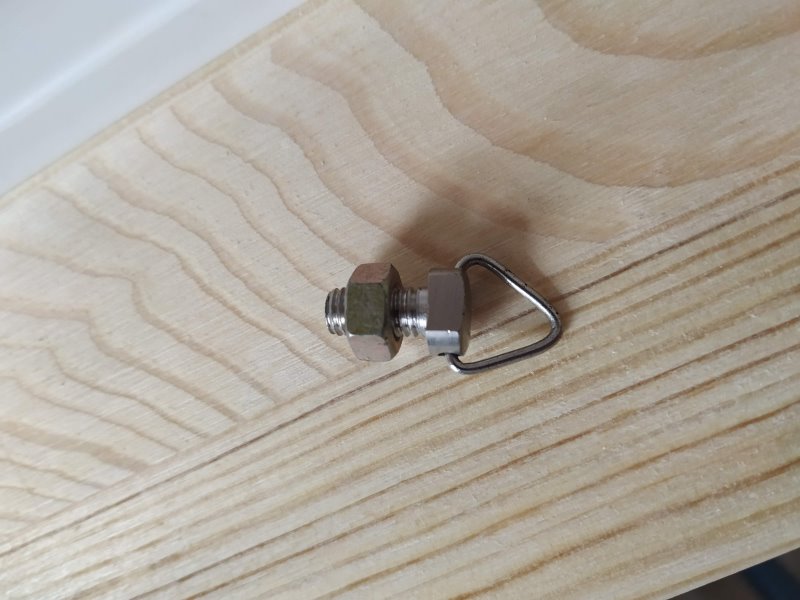
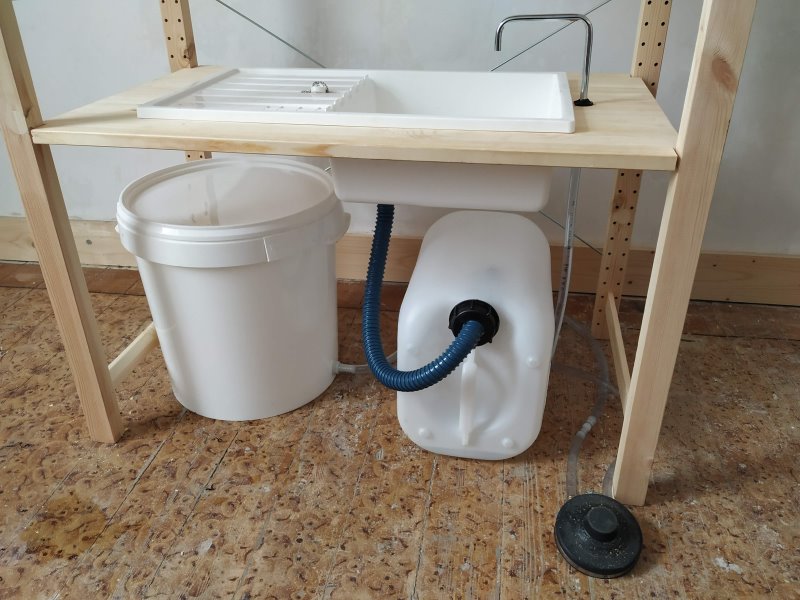
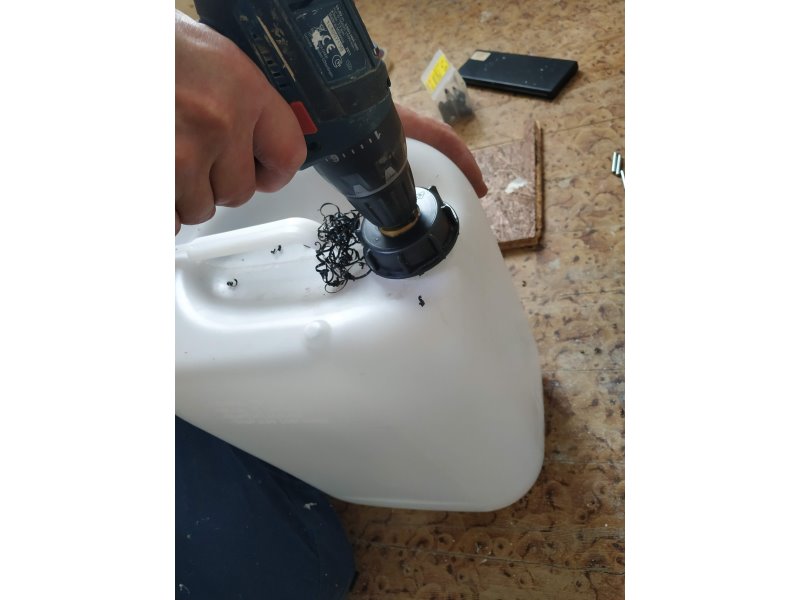
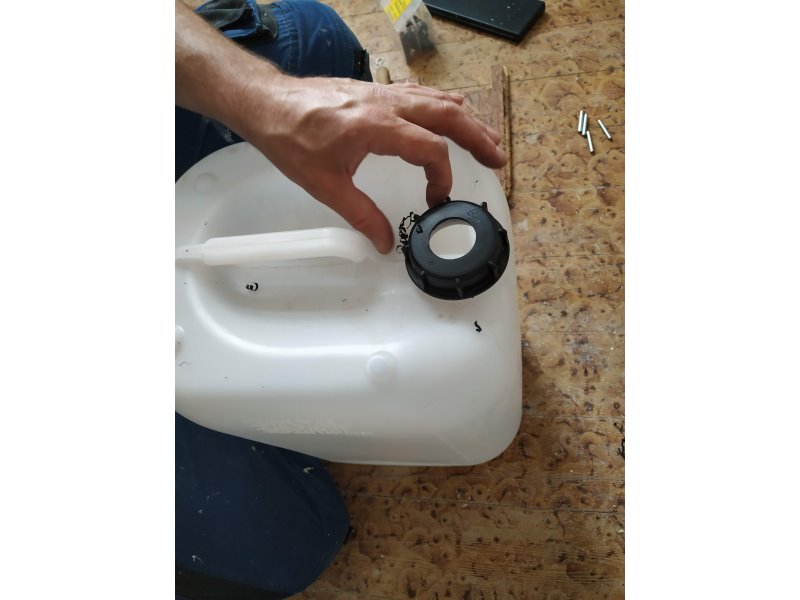
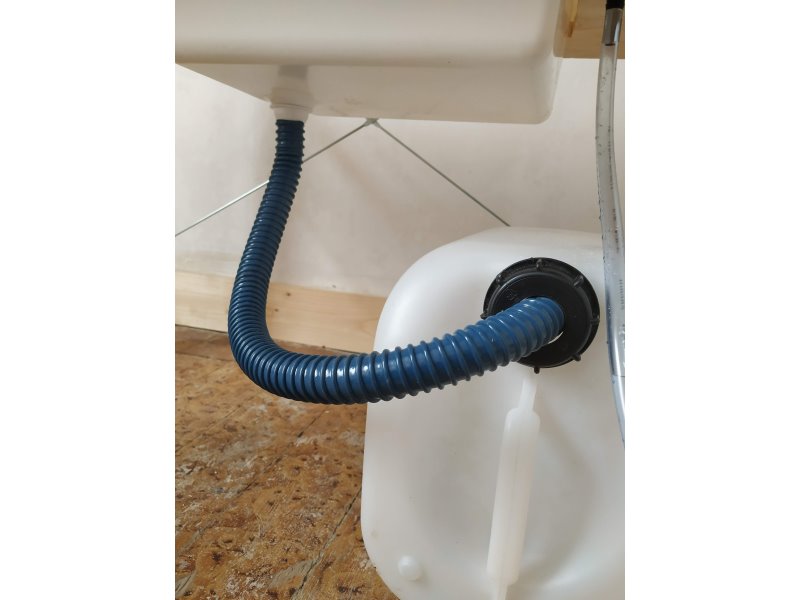
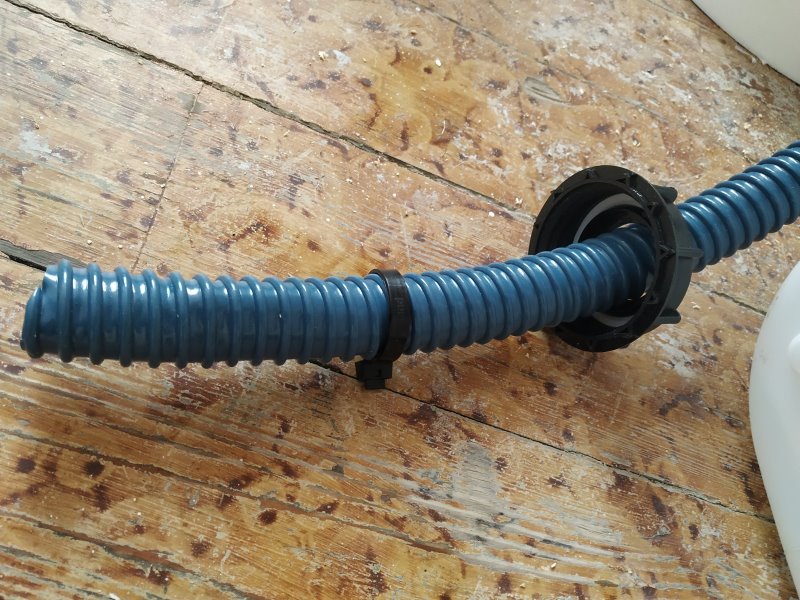
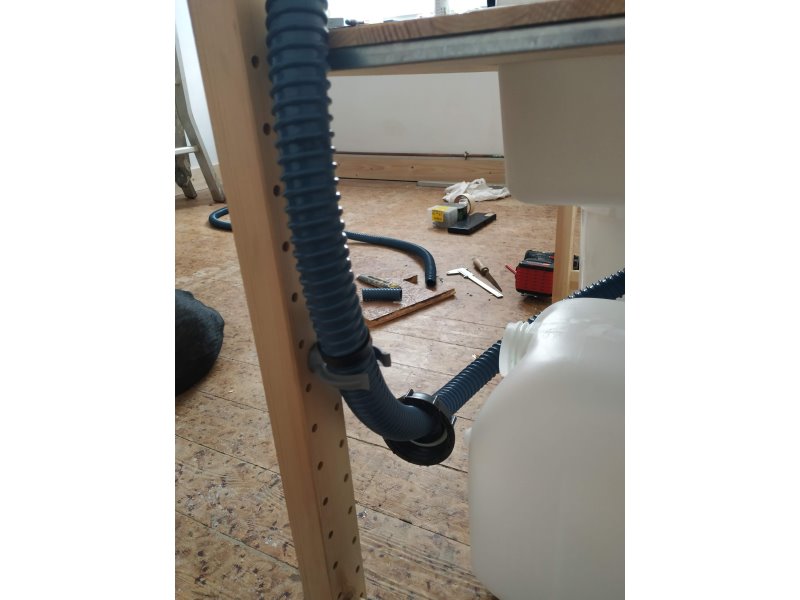
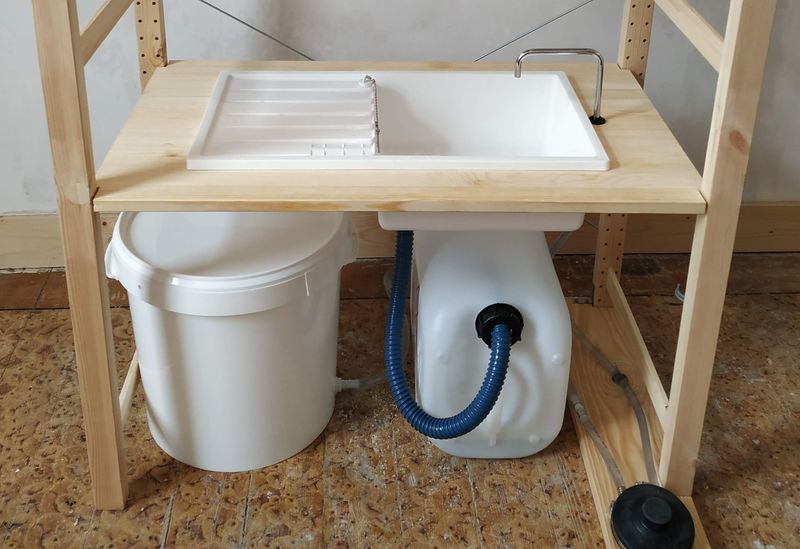
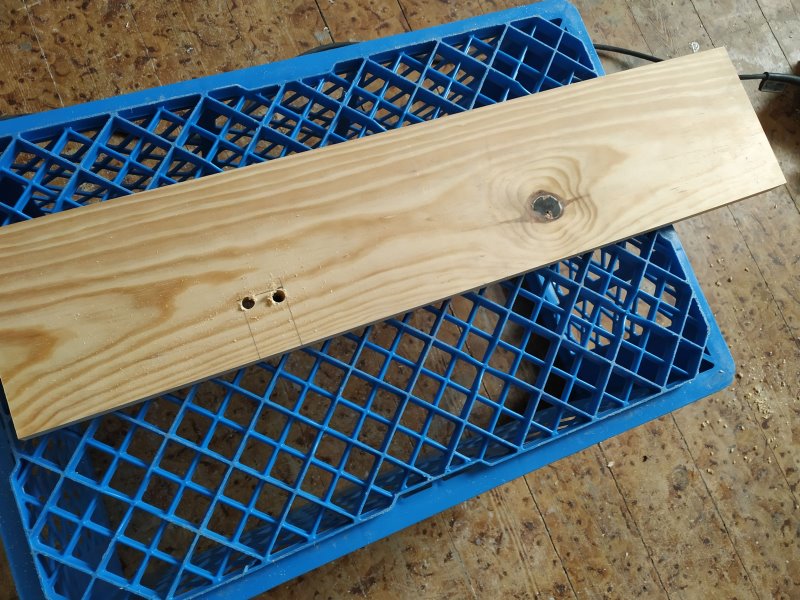
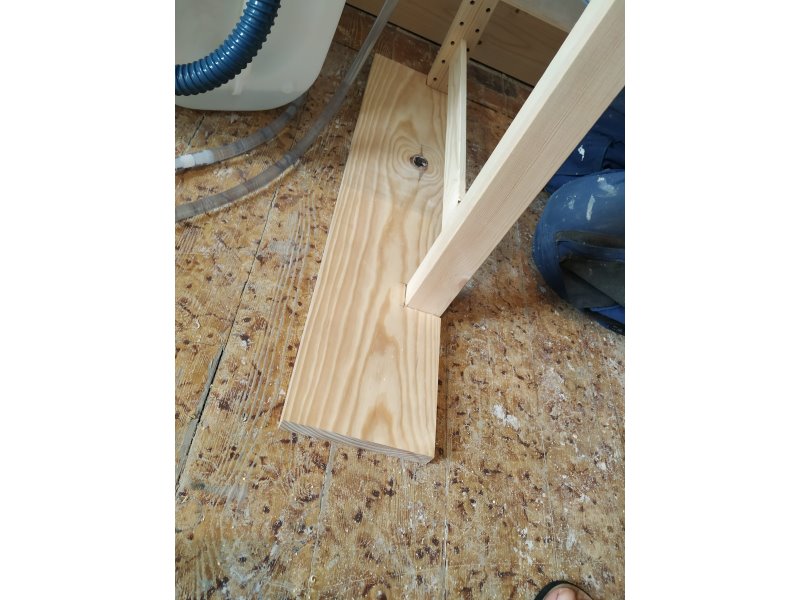
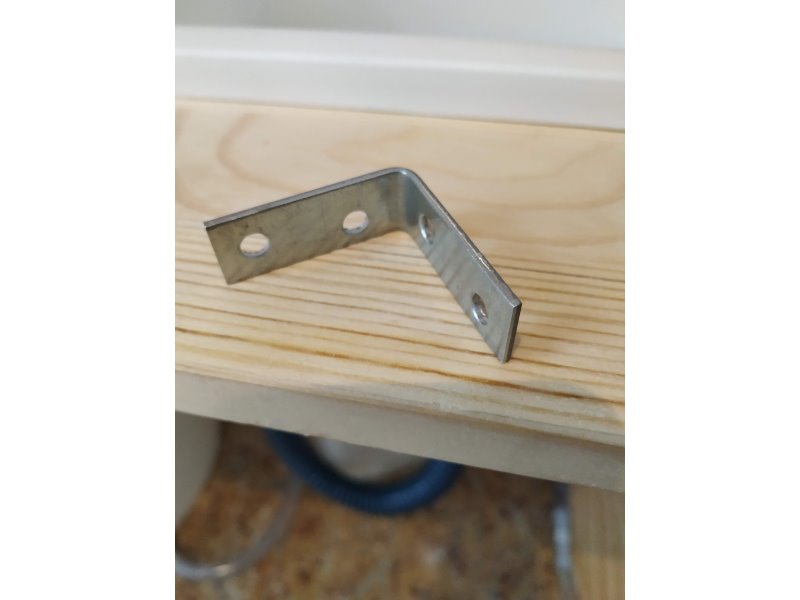
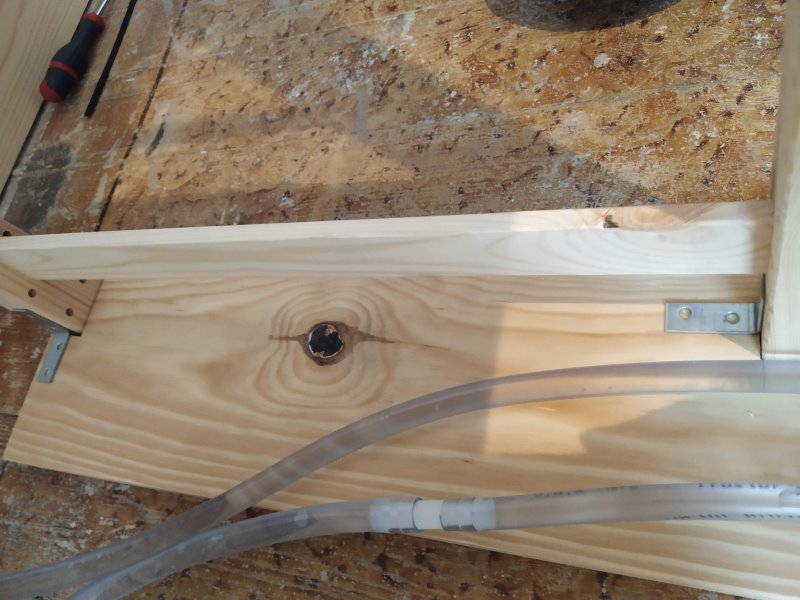
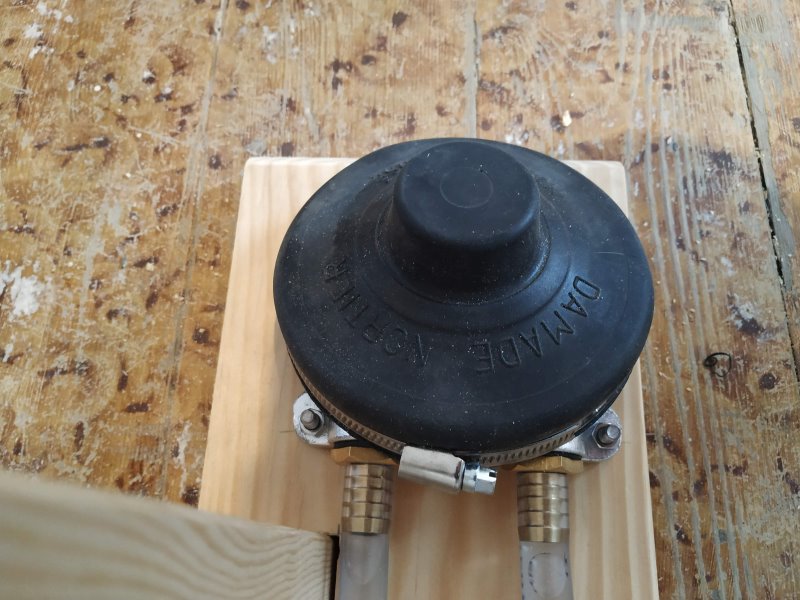
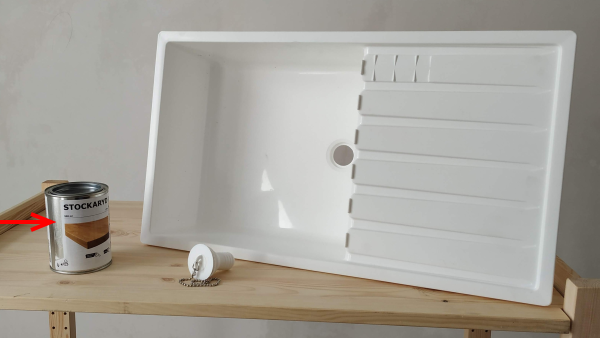
 Français
Français English
English Deutsch
Deutsch Español
Español Italiano
Italiano Português
Português